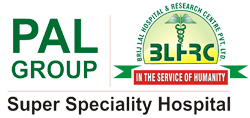Heart bypass surgery, also known as coronary artery bypass grafting (CABG), is a surgical procedure that has played a vital role in extending and enhancing the lives of countless individuals suffering from severe coronary artery disease (CAD). In this blog, we will delve into the world of heart bypass surgery, exploring what it is, how it works, and its significance in modern medicine.
What is Heart Bypass Surgery?
Heart bypass surgery is a surgical procedure aimed at treating coronary artery disease, a condition where the coronary arteries that supply blood to the heart muscle become narrowed or blocked due to the accumulation of fatty deposits or plaque. This narrowing can reduce blood flow to the heart, leading to chest pain (angina) or, in severe cases, heart attacks. Heart bypass surgery is performed to restore proper blood flow to the heart by creating new routes for blood to bypass the blockages. Brij Lal Hospital have many different technology and tools use heart bypass surgery.
How Does Heart Bypass Surgery Work?
The fundamental principle behind heart bypass surgery is to create alternative routes for blood to reach the heart muscle. Here’s a simplified step-by-step explanation of the procedure:
- Anesthesia: The patient is administered general anesthesia to induce unconsciousness and ensure they feel no pain during the surgery.
- Harvesting Grafts: The surgeon selects healthy blood vessels, often from the patient’s own body (such as the leg vein or internal mammary artery), to use as grafts. These grafts will serve as new conduits for blood to bypass the blocked coronary arteries.
- Opening the Chest: A large incision is made in the chest to access the heart. The patient is typically connected to a heart-lung machine that temporarily takes over the heart’s pumping action, allowing the surgeon to work on a still heart.
- Bypass Grafting: The surgeon carefully attaches one end of each graft to the aorta (the main artery leaving the heart) and the other end to the coronary artery beyond the blockage. This effectively bypasses the blocked segment, creating a new pathway for blood to flow to the heart muscle.
- Closing the Chest: Once the grafts are in place and functioning correctly, the chest is closed, and the heart is allowed to regain its natural rhythm.
Significance in Modern Medicine
Heart bypass surgery has had a profound impact on cardiovascular care and has saved countless lives. Here are some key aspects of its significance:
- Life-Saving Intervention: Heart bypass surgery is often a life-saving procedure for individuals with severe CAD. It restores blood flow to the heart muscle, reducing the risk of heart attacks and alleviating angina symptoms.
- Improved Quality of Life: For many patients, bypass surgery significantly improves their quality of life by relieving chest pain and allowing them to engage in physical activities they were previously unable to do.
- Long-Term Effectiveness: Bypass grafts can remain functional for many years, providing long-lasting benefits. However, lifestyle changes and medical management are crucial to maintaining the health of the grafts and preventing further blockages.
- Ongoing Advancements: Advances in surgical techniques and technology have made heart bypass surgery safer and more effective. Minimally invasive approaches and robot-assisted surgery are among the innovations that continue to enhance patient outcomes.
Conclusion
Heart bypass surgery is a critical and highly effective intervention for individuals with advanced coronary artery disease. By creating new pathways for blood to reach the heart muscle, this procedure has saved countless lives and improved the quality of life for many. As medical science continues to advance, heart bypass surgery remains a cornerstone of cardiovascular care, offering hope and renewed vitality to those facing the challenges of heart disease and underscoring the remarkable capabilities of modern medicine.

